Nottingham's Wollaton Hall to host T. rex fossil in exhibition
- Published
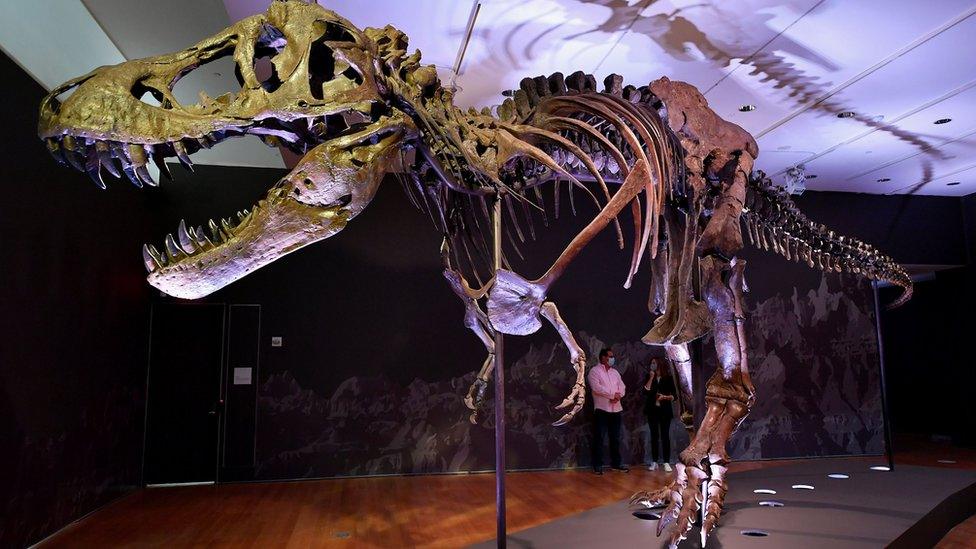
T. rex fossils rarely leave the countries where they are discovered, officials said
The first real Tyrannosaurus Rex skeleton shown in England for more than 100 years is coming to Nottingham.
The fossil, named Titus, found in the US state of Montana in 2018, has not been publicly displayed before.
There are no real T. rex skeletons currently on show in the UK and fossils of the large theropod rarely leave North America, the city council said.
Titus and a wider exhibition about his world will be at Wollaton Hall from July 2021 to August 2022.
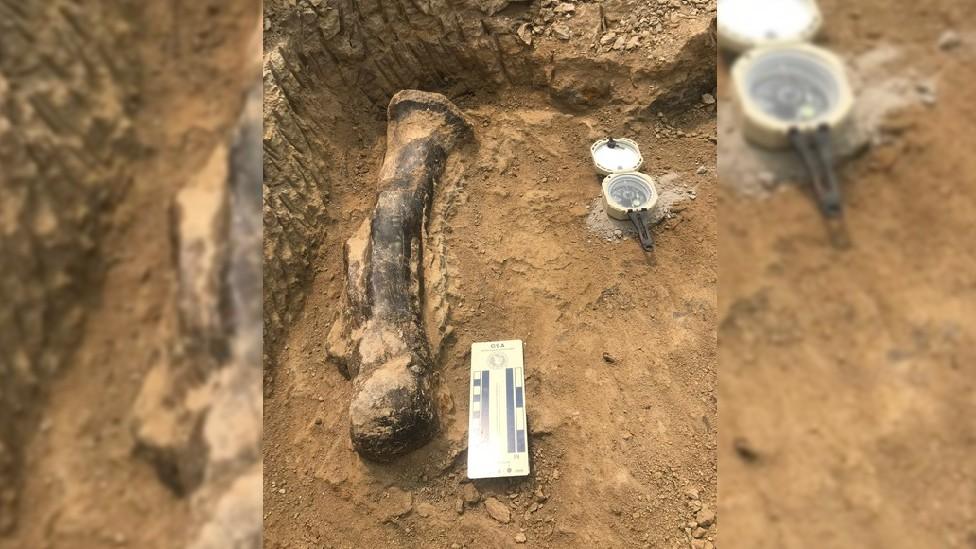
Titus's metatarsal (toe bone) being excavated
Backed by £250,000 of Arts Council England funding, the 4m (13ft) tall and 11m (36ft) long skeleton will take up all of the hall's main Willoughby Room.

Tyrannosaurus Rex
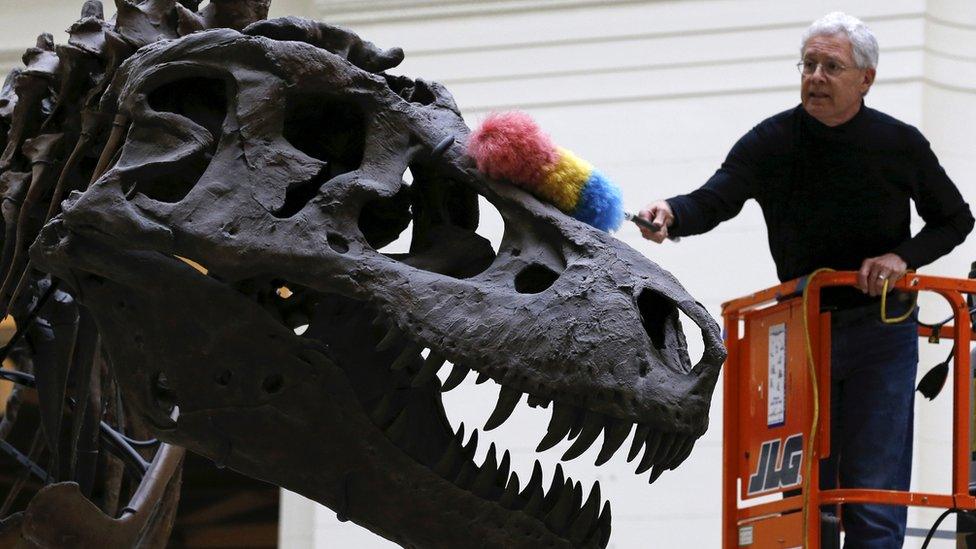
A theropod - two-legged, three-toed dinosaurs - which lived in the Late Cretaceous period, 68-66 million years ago.
Current thinking puts their top running speed at a brisk jog of 12 mph (19kph).
Adults are believed to have weighed up to 15,500 lbs (7,000 kgs).
It had the strongest bite of any land animal - with a force of over 7,700 lbs (3500kg) - the equivalent impact of three small cars.
Its jaws had 60 teeth, each one up to 20cm (8 inches) long and could grow new ones.
Source: BBC/Natural History Museum

Dr David Hone, senior lecturer in Zoology at Queen Mary University of London and part of the exhibition team, said: "Visitors will be able to explore the world of Titus and take a closer look at his particular features - his crushing bite, incredible eyesight and keen sense of smell, air-filled bones, weight, size and speed.
"And then look more closely at his make-up of muscle and tissue, with 3D scans of his bones to examine and handle - and try to decide if in fact he was covered in scales or feathers or both."
Understanding of T. rex behaviour is constantly changing, with a new study suggesting they may have hunted in packs like wolves.

Follow BBC East Midlands on Facebook, external, on Twitter, external, or on Instagram, external. Send your story ideas to eastmidsnews@bbc.co.uk, external.
Related topics
- Published21 April 2021
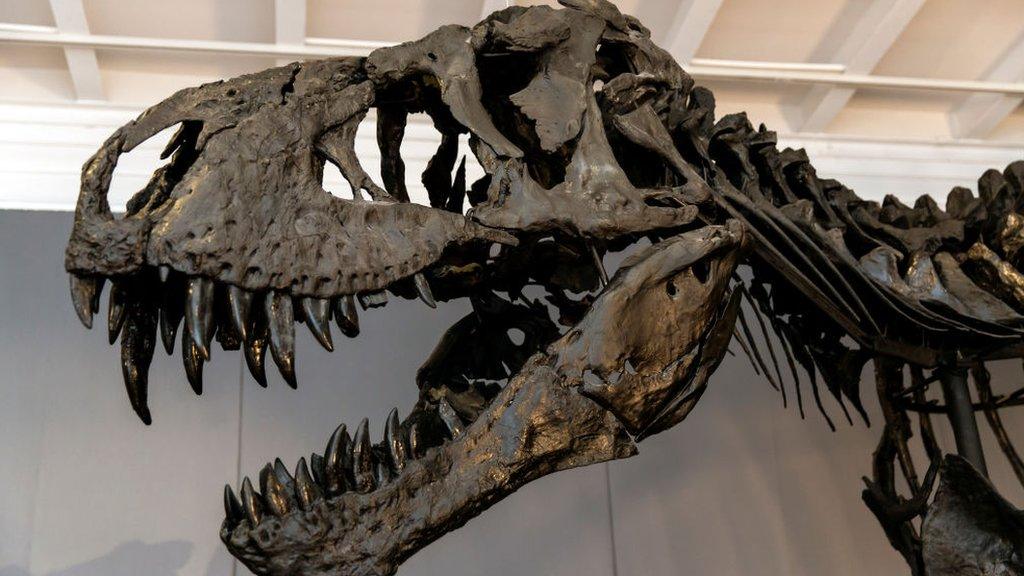
- Published24 February 2021
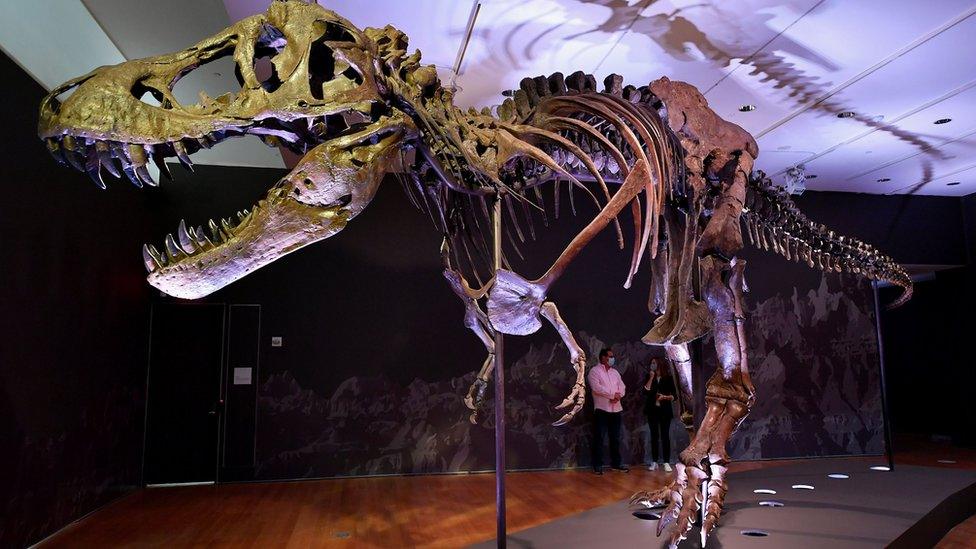
- Published10 June 2017
